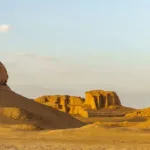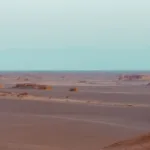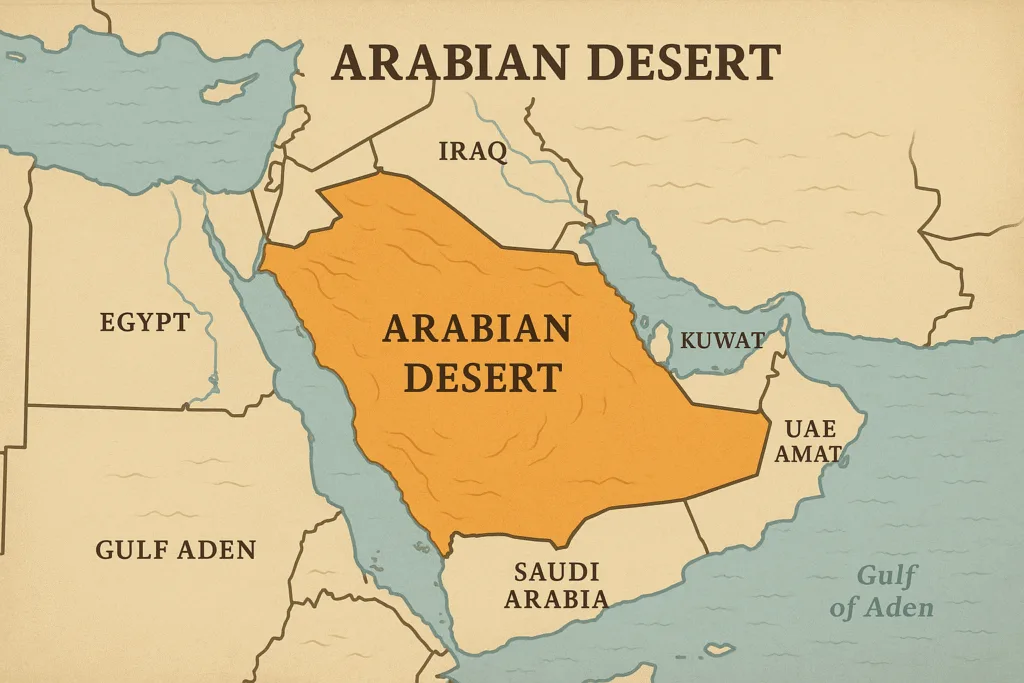Location & Continent
Continent: Asia
Countries: Iran (Kerman, Sistan-Baluchestan, South Khorasan Provinces)
Coordinates: ~30.216°N, 58.839°E (UNESCO property reference)
Photos of the Dasht-e Lut
Physical Features
Area (UNESCO World Heritage property): 2,278,015 ha (~22,780 km²); buffer zone 1,794,134 ha
Relief highlights: Yardangs/kaluts up to ~155 m high; sand seas cover ~40% of the property with dunes reaching up to ~475 m
Elevation: Interior basin with stony desert pavements; basaltic Gandom Beryan plateau in the NW of core zone
Climate & Precipitation
Temperature: Among the hottest land surfaces on Earth; satellite-derived LST has reached 70.7 °C (2005) and, in multi-year analyses, up to ~80.8 °C
Precipitation: Hyper-arid; annual precipitation typically < 30 mm
Ecological Features
Ecozone: Palearctic (Iranian plateau deserts)
Biome: Deserts and xeric shrublands
Ecoregions: Yardang (kalut) fields in the west; extensive dune fields in the south & east; stony pavements/hamada and evaporite pans (playas)
Flora & Fauna
Flora: Sparse, highly adapted desert vegetation; nebkha dunes (vegetation-anchored mounds) locally up to ~12 m
Fauna: Limited but specialized desert-adapted invertebrates and vertebrates recorded; biodiversity knowledge for the core is still incomplete
Geology & Notable Features
Geology: Ongoing aeolian erosion/deposition shaping world-class yardangs (kaluts); evaporite landforms (salt polygons, tepee-fractured crusts, gypsum domes); extensive hamada and bajadas
Notable Features: Kalut corridors traceable >40 km; dunes among the world’s tallest (~475 m); Gandom Beryan black stony desert/plateau
Dasht-e Lut: An Overview
Dasht-e Lut, also known as the Lut Desert, is a vast expanse of uninhabitable land located in southeastern Iran. It spans an area of approximately 51,800 square kilometers, making it one of the largest deserts in the world. Recognized for its extreme conditions, Dasht-e Lut holds the record for the highest ground temperature ever recorded on Earth, reaching an astonishing 70.7 °C (159.3 °F).
Geography and Climate
The geography of Dasht-e Lut is characterized by its dramatic landscapes, which include sand dunes, salt flats, and rocky mountains. These features are the result of complex geological processes and climatic conditions. The desert is bordered by the Zagros Mountains to the west and the Hormuz Strait to the south, affecting its weather patterns.
Climate Characteristics
The climate in Dasht-e Lut is classified as hyper-arid, with annual rainfall averaging less than 30 millimeters. Summer temperatures frequently exceed 50 °C (122 °F), while winter temperatures can drop below −30 °C (−22 °F). The unique climatic conditions make this desert one of the hottest places on Earth.
Flora and Fauna
Surprisingly, despite its harsh conditions, Dasht-e Lut hosts a variety of life forms adapted to the extreme environment. Vegetation is sparse, primarily consisting of drought-resistant plants such as marshmallow plants and acacia trees. The fauna comprises several species that have developed exceptional adaptations, including:
- Persian Gazelle – A nimble herbivore
- Sand Gazelle – Adapted to fast running in desert conditions
- Desert Fox – A skillful predator
Ecosystem Adaptations
Animals in the Dasht-e Lut ecosystem employ a number of strategies to survive. For instance, many nocturnal creatures avoid the extreme heat of the day, emerging at night when temperatures are cooler. This behavioral adaptation, coupled with physiological changes like water retention, illustrates the resilience of life in one of Earth’s most inhospitable regions.
Tourism and Expeditions
Despite its arid landscape, Dasht-e Lut attracts adventurers and scientists alike. This unique desert offers opportunities for:
- Photography – Capture stunning landscapes and geological formations.
- Research – Study climate change and ecological adaptations.
- Adventure Tourism – Activities include trekking and off-road driving.
Notable Sites in Dasht-e Lut
Some of the most stunning features within the Dasht-e Lut include:
- Gandom Beryan Plateau – Home of extreme temperatures
- Kaluts – Eroded structures resembling ancient cities
- Lut Salt Lake – A mesmerizing expanse of white salt crust
Detailed Comparison Table
| Desert Name | Area (km²) | Highest Recorded Temperature (°C) | Average Rainfall (mm) |
|---|---|---|---|
| Dasht-e Lut | 51,800 | 70.7 | 30 |
| Sahara Desert | 9,200,000 | 58 | 100 |
| Atacama Desert | 105,000 | 58.0 | 1.5 |
| Sonoran Desert | 310,000 | 56.7 | 300 |
Conclusion
In summary, Dasht-e Lut stands out not only for its incredible climatic extremes but also for its fascinating geological and ecological features. It serves as an essential site for tourism and scientific research alike. Those seeking adventure or knowledge will find that the Lut Desert offers a marvellous and arid spectacle, showcasing the beauty and resilience of nature in one of the world’s most extreme environments.
References
UNESCO World Heritage Centre – Lut Desert (property facts, landforms, dunes & kaluts)
NASA Earth Observatory – Iran’s Lut Desert (winds, yardangs, context)
Bulletin of the American Meteorological Society – Global LST extremes (up to ~80.8 °C)
UNESCO – State of Conservation / documentation (ownership, protection)
UNEP-WCMC – World Heritage Datasheet (overview, hyper-aridity)
ESA – Dasht-e Lut salt desert (imagery, extreme LST note)
Wildlife Institute of India (Govt. of India) – Lut Desert brief (<30 mm/yr precipitation)





